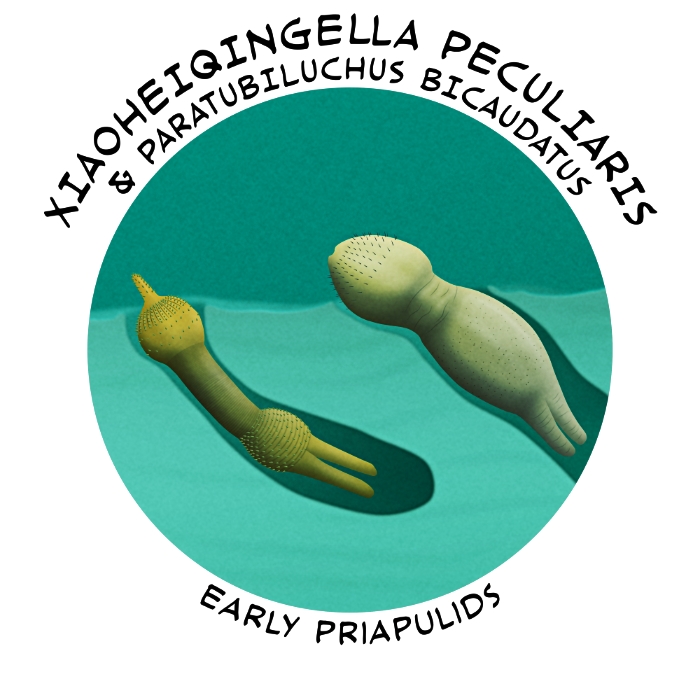Named for their resemblance to human penises, priapulids (or “penis worms”) are marine scalidophoran worms that live on or in muddy seafloor sediment, with some species having a surprisingly high tolerance for oxygen-poor environments and toxic levels of hydrogen sulfide. Despite being a rather low-diversity phylum with only around 20 living species, they’re widespread and sometimes very numerous, with over 80 adult individuals per square meter (~10ft²) recorded in some locations.
The earliest definite modern-style priapulid in the fossil record comes from the late Carboniferous (~308 million years ago), but their ancestry was probably somewhere in the early Cambrian among the taxonomic mess of palaeoscoloecids and archaeopriapulids.

Xiaoheiqingella peculiaris was a very priapulid-like scalidophoran known from the Chinese Chengjiang fossil deposits (~518 million years ago). Around 1cm long (0.4″) it had a ringed spiny body with a swollen proboscis region at the front and a bulbous rear end with a pair of long tail-like appendages.
It’s generally considered to be a close relative or early representative of the modern priapulid family Priapulidae, but some analyses have instead suggested it was part of a “stem” priapulid lineage of much earlier forms.
Living alongside it in the Chengijiang region was another potential early priapulid, Paratubiluchus bicaudatus. Also about 1cm long (0.4″), this species was chunkier with a spiny proboscis, a bumpy body lacking rings, and two short rear appendages, and its overall proportions were very similar to the larvae of some modern priapulids.
It may have been closely related to the modern tubiluchid priapulids, but some studies disagree – one analysis even places it as much closer to kinorhynchs and loriciferans than to priapulids!
Both of these species were fairly rare elements of their ecosystem, and seem to have had very similar ecologies to each other. They would have been burrowing carnivores using their retractable proboscises to grab small invertebrate prey, sometimes also feeding detritivorously on decaying organic matter in the mud around them.
Their anatomical and ecological similarities to modern priapulids suggest that the group as a whole rapidly developed in the early Cambrian and then just… didn’t ever really need to change their body plan or lifestyle much for the next half a billion years.
